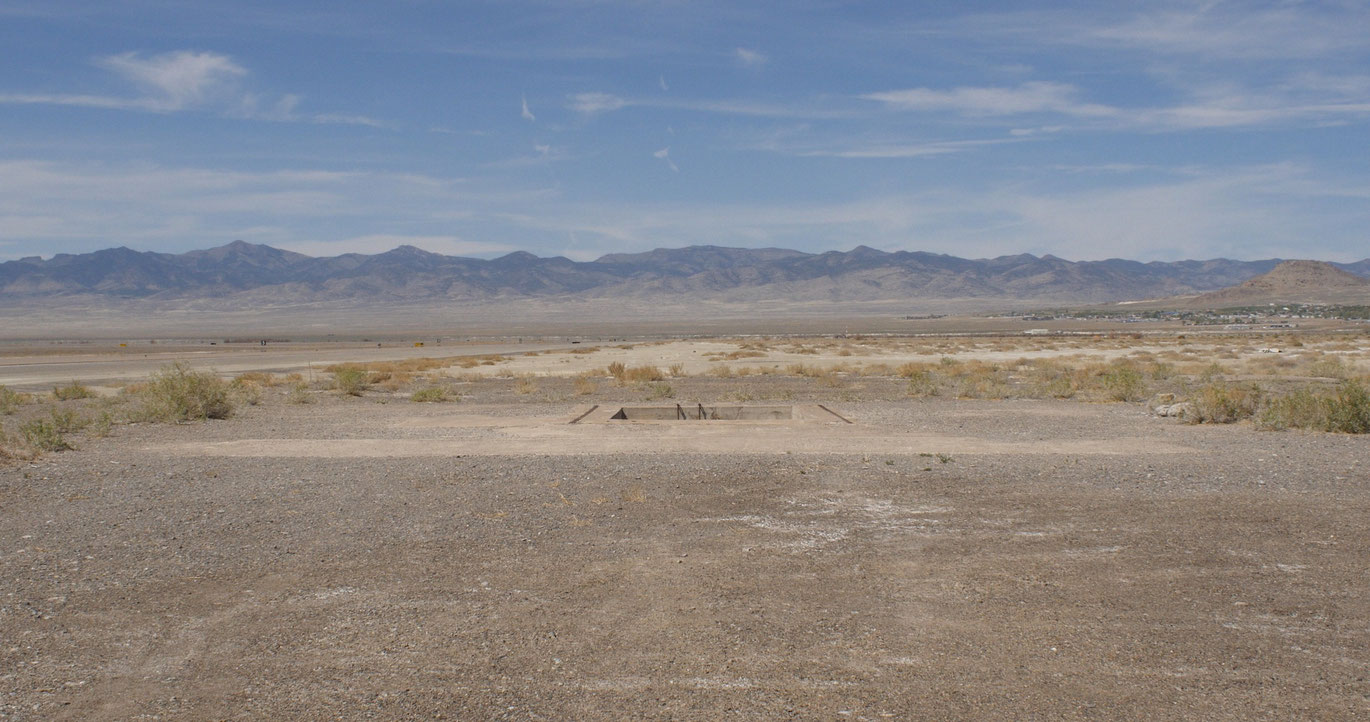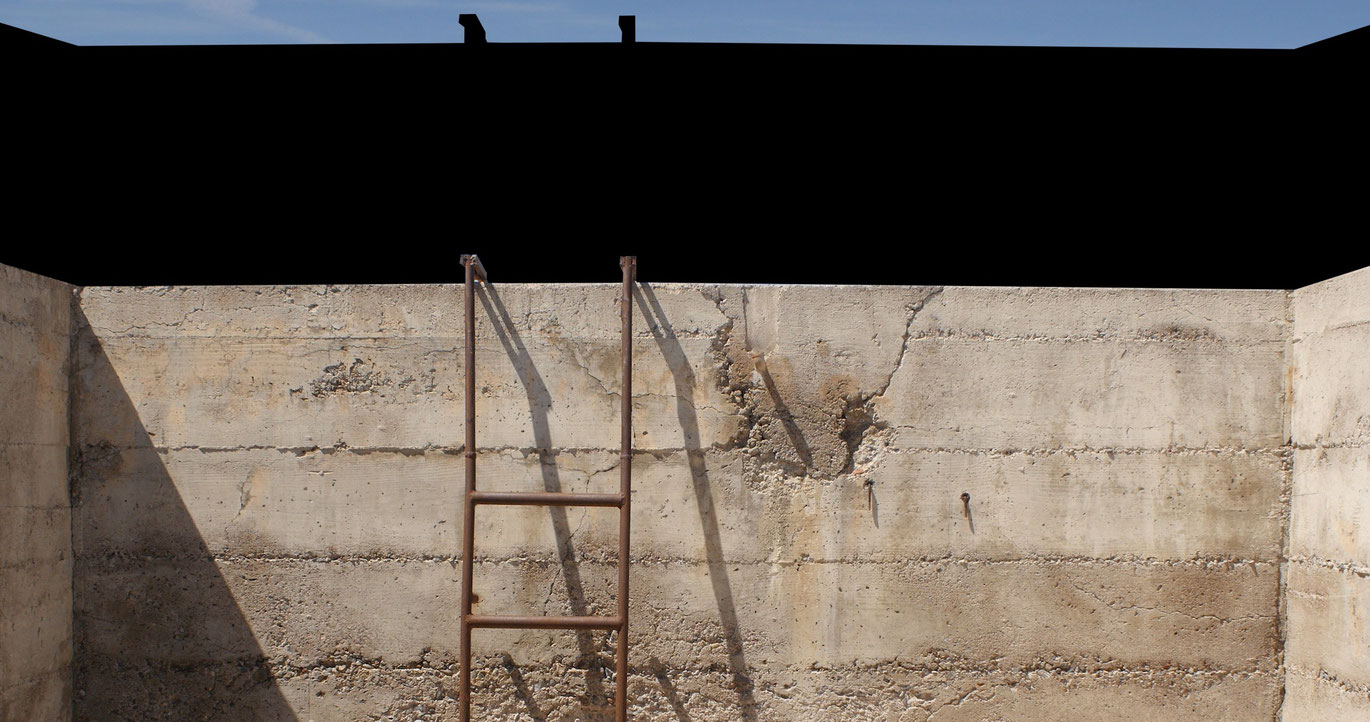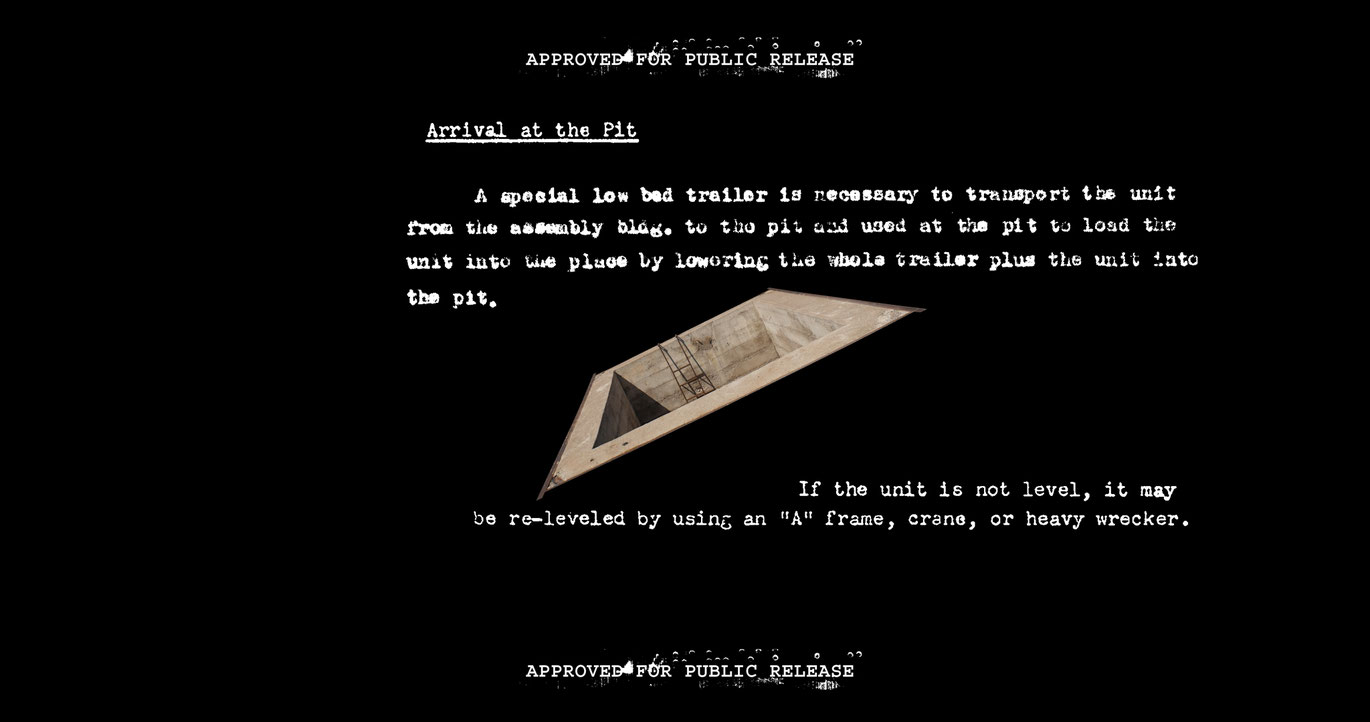Loading Pit
In an anticlimactic minimalist staging, the camera stands still in a remote corner of the Utah desert, revealing an atomic bomb loading pit used for military practice, while a voice over reads parts of the unclassified user manual "How to built an Atomic Bomb Loading Pit" released to the public in June 1946. The sonic suspension imposed by the computerized slowness of the subjectless reader frames the deep time dimension of this arid dusty landscape in Wendover. We are led through details of the manual, which suggests forms to best-adapt to the terrain, climate, soil conditions in the pit area, to allow for the needed cleanliness and security precautions for Boeing B-29 atomic bomb loading. Later in the film the loading pit starts to deform and drift in voided suspension, isolated it from its environment. Dramatizing the implicancy of this site of warfare in its semiotic and physical density, the camera approaches the space slow motion, replicating the angle of sight of the airplane pilot. The concrete, practical materiality of the pit contrasts the exponential scale of the planetary consequences brought upon by this piece of infrastructure. In this construction eroded by the light of the desert, we encounter what is perhaps one of the most significant monuments that mark the end of the holocene.
In this film which is supported by The Center for Land Use Interpretation and Sonic Acts, Lukas Marxt explores once more, what are the impacts of anthropogenic inhabitation, deploying a tactical usage of minimalist anticlimactic aesthetics and scrutinized framing of military ruins. Resituating our perception of nuclear atomization, Marxt film navigates through shifting timescales, abducting the viewer to a dehumanized timeless dimension which is deranging and uncertain, just as the full scope of the nuclear isotope decay. (Margarida Mendes)
Viennale Katalogtext 2019 (Critique)
Viennale catalogue text 2019
Loading Pit
2019
Austria, Germany
10 min



